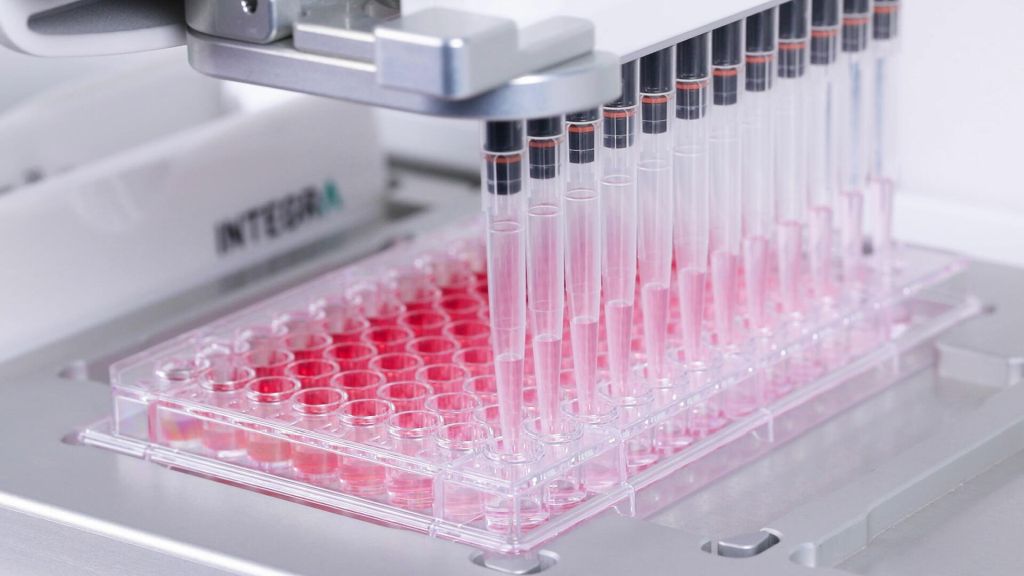Accurate dosage is a critical component in health-related fields and fitness regimens alike. For medical professionals, the stakes include patient saf
Accurate dosage is a critical component in health-related fields and fitness regimens alike. For medical professionals, the stakes include patient safety and treatment efficacy. Athletes and fitness enthusiasts, on the other hand, seek precise supplementation for optimal performance and recovery. Miscalculations can result in diminished goals at best, and serious health complications at worst. Enter the peptide calculator—a revolutionary tool that aids in ensuring exact dosages without error.
This blog post will guide you through the importance of precision in dosage calculations, explain the benefits of peptide calculators, and provide insights into how these tools can serve different audiences, ranging from physicians to athletes. Whether you are a healthcare provider administering treatments or a fitness enthusiast incorporating peptides into your routine, understanding how peptide calculators optimize precision is key.
Why Precision Matters in Dosage Calculations
Imagine a scenario where a medication or supplement gets incorrectly dosed. Even minor errors can lead to inadequate results or potentially harmful side effects. For medical professionals, a slight miscalculation in administering medication doses could affect a patient’s recovery or health trajectory. For athletes, incorrect supplementation might hinder progress or lead to imbalances in the body.
Peptides, which are short chains of amino acids used in medical therapies and athletic performance optimization, require strict dosing standards. Too little, and the compound may not work as intended; too much could lead to adverse reactions. These highly potent compounds underscore the need for precision, which is exactly where tools like peptide calculators prove invaluable.
What Is a Peptide Calculator?
At its core, a peptide calculator is a specialized tool designed for accurate dosage reconstructions based on peptide vial strength, diluent volume, and desired dosage. It eliminates the guesswork, translating complex mathematical calculations into simple, actionable figures.
While manual calculations are technically possible, they are prone to errors, particularly when multiple steps are involved. The peptide calculator automates this process, ensuring speed, reliability, and precision. Whether you’re reconstituting a peptide for growth hormone optimization or an anti-inflammatory dose, the calculator delivers consistent results without requiring days of mental gymnastics or room for oversight.
Benefits of Using a Peptide Calculator
One of the main benefits of a peptide calculator is its ability to save time. Instead of scribbling calculations and double-checking them repeatedly, you can input values into the tool and obtain accurate results almost instantly. For medical professionals managing intricate drug protocols, it simplifies otherwise complicated calculations, freeing up time for patient care.
For athletes, accuracy matters for entirely different reasons. Fitness supplements often represent a significant investment, and improper dosing could waste resources or result in underwhelming outcomes. The peptide calculator ensures you achieve the precise balance necessary for effective results. Additionally, it accommodates customizable measurements. This level of flexibility allows you to align dosages with specific needs, goals, or medical requirements.
Since the tool minimizes human error, it is particularly valuable in situations demanding a high degree of precision. Even experienced professionals benefit from the reliability and consistency provided by a peptide calculator. It offers peace of mind, knowing that every dosage is formulated correctly.

Who Can Benefit?
Peptide calculators bridge the gap between complex dosing equations and real-world applications. Here’s how they serve the distinct needs of two key audiences—medical professionals and athletes.
Medical Professionals
For healthcare providers, accurate dosage control is non-negotiable. A misjudgment in therapeutic drugs, especially peptides or hormones, is not just a protocol breach; it can jeopardize patient lives. Peptides are often prescribed to regenerate tissue, balance hormones, or treat metabolic conditions, which means dosing must be both customized and exact. Medical professionals using peptide calculators don’t just gain speed—they gain accuracy, which is fundamental in patient care.
Additionally, these tools assist in streamlining the workflow in clinical settings. Physicians, nurses, and pharmacists can use peptide calculators to ensure that even the smallest measurement doesn’t go overlooked. With built-in precision, the tool aligns neatly with medical guidelines, helping maintain compliance.
Athletes and Fitness Enthusiasts
For athletes, supplementation comes with the need for microscopic attention to detail. The dosage of performance-enhancing or recovery peptides must align with fitness goals while complying with strict health standards. Overuse can hurt your performance, while underuse can limit your potential gains.
Peptide calculators allow athletes to fine-tune their protocols, ensuring consistency across varying training cycles or recovery phases. These tools are not just for the seasoned pros in professional sports; they’re just as relevant for hobbyists and personal trainers who want to maximize performance with confidence.
How a Peptide Calculator Works
A peptide calculator simplifies dosage into three main components:
- Vial Strength
Start by locating the strength of your peptide (usually expressed in milligrams) on the product label. This is the total amount of active compound within the vial.
- Diluent Volume
Determine how much diluent (such as bacteriostatic water) will be mixed with your peptide to create the solution.
- Desired Dosage
Input your desired dosage (typically in micrograms or milligrams per injection) into the calculator. This often aligns with your prescribed or planned schedule.
The peptide calculator then processes these inputs to deliver exact dosage instructions, ensuring consistency every time.
Why Choose a Digital Tool Over Manual Calculations?
While calculating dosages by hand is possible, the margin for error significantly increases with manual methods. Misreading a label, forgetting to multiply a denominator, or switching micrograms for milligrams can result in incorrect outcomes.
Digital peptide calculators eliminate these risks altogether. Their user-friendly interfaces ensure anyone—from medical students to advanced professionals—can operate them without confusion. Furthermore, many calculators feature built-in safety thresholds to flag unusual input combinations. These fail-safes introduce an extra layer of protection that spreadsheets or traditional pen-and-paper methods simply can’t match.
Current Trends in Peptide Usage Across Industries
Peptides are increasingly being utilized in various industries, ranging from medicine to fitness. Human growth hormone peptides, for instance, are frequently used in anti-aging therapies or to accelerate post-surgical healing. Meanwhile, athletes incorporate peptides like BPC-157 or TB-500 to improve muscle recovery and joint health.
This widespread use showcases the growing reliance on peptides for health optimization. Similarly, the peptide calculator reflects this trend as both healthcare providers and fitness professionals recognize the importance of proper dosage.
Enhancing Precision, Simplifying Processes
Peptide calculators have redefined how professionals and fitness enthusiasts approach dosing protocols, and their importance will only grow as peptide therapies gain momentum. By offering accuracy, efficiency, and the ability to prevent errors, these tools empower users to focus on what matters most—improving health outcomes and achieving personal or professional goals.
If you’re ready to streamline your dosage calculations and take precision to the next level, explore available peptide calculators today. Because when every milligram counts, the right tools make all the difference.


COMMENTS